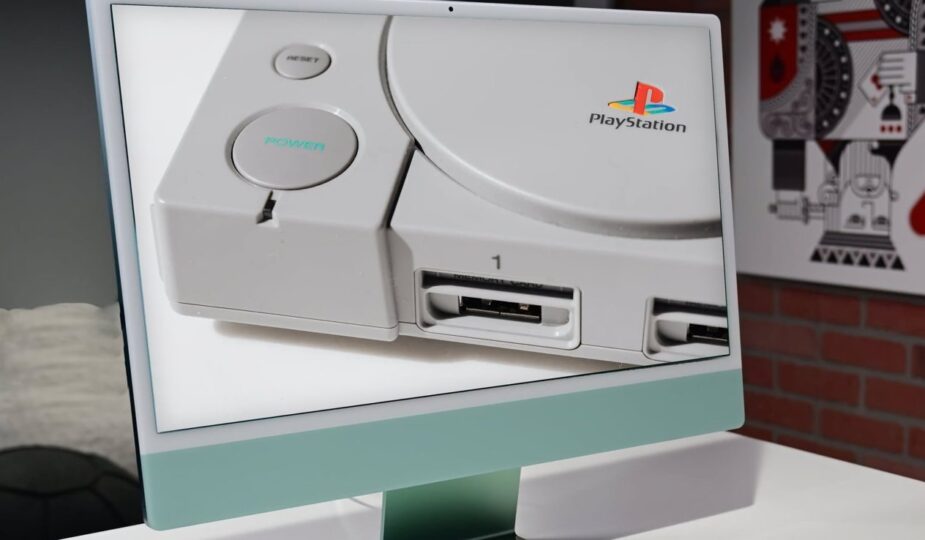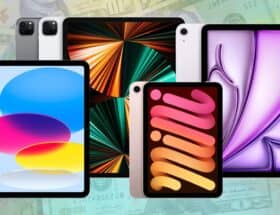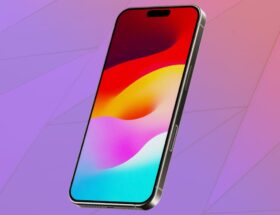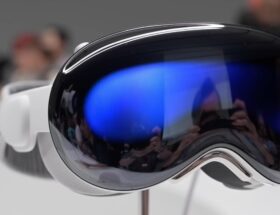You can emulate the original Sony PlayStation on Apple Silicon Mac. .
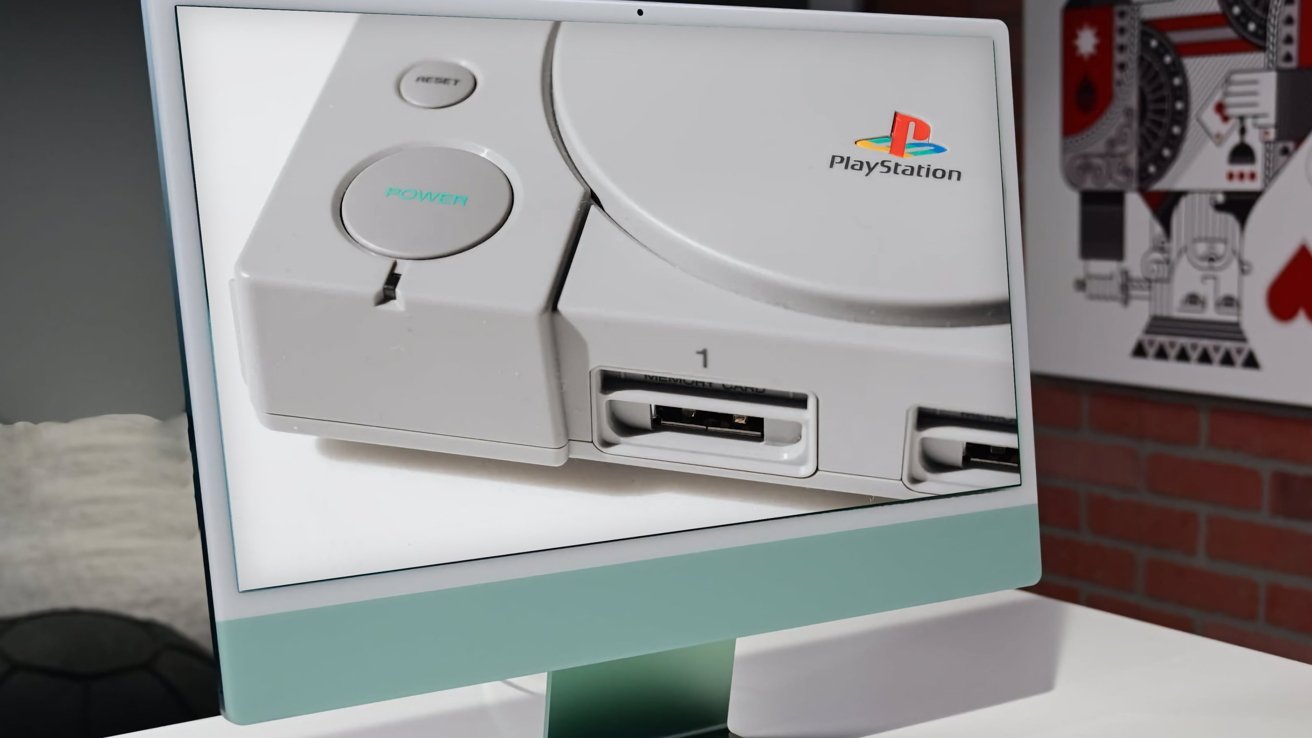 0 Facebook x.com Reddit
0 Facebook x.com Reddit
Sony PlayStation and Nintendo 64 games can be played on Apple Silicon Mac with a little effort. Here's how to emulate classic consoles on a Mac or MacBook.
The transition from the fourth to the fifth generation of game consoles was a unique period in the history of games. This marked the transition from 2D to 3D gaming in the mid-1990s.
This included pioneering work in bringing real-time 3D graphics to life, as well as disrupting major industry players.
It also adds a whole new dimension (literally) to game emulation. Polygon transformation, projection, lighting and shading, texture mapping, anti-aliasing, depth and occlusion, animation and camera positioning – all of this must be accurately handled by emulators.
Some of these aspects can even be manipulated to improve visual effects.
By the way, modern Mac computers can easily perform graphics calculations performed on the hardware of fifth-generation consoles. But it is more difficult for them to emulate a console performing the same calculations.
When we add a few graphical enhancements to the mix, you'll see how emulating these games can quickly add complexity to your Mac's hardware.
While the N. Sane trilogy is excellent, sometimes it's nice to return to the pixel jumps of the original Crash Bandicoot game engine.
Unlike the fourth generation systems in our previous guide , the installation for fifth-generation console emulation on Mac depends on the specific console.
Additionally, due to the higher complexity, not every available approach works well. So, the following guide makes recommendations based on our testing and experimentation.
Important: legality of emulation
Before you To begin you should make sure you understand the legalities of game emulation. Console emulation is usually allowed if you have the original hardware, so be sure to do it.
You must also have a legal copy of the original game, as downloading or distributing the game without owning it is illegal. However, the legality of using digital copies of physical games depends on the copyright laws in your jurisdiction and may vary significantly from region to region.
Please check all of this before proceeding.
The need for BIOS files
In the world As a result of emulation, optical disc systems such as the PlayStation or Sega Saturn require BIOS files to operate. Cartridge-based systems like the N64 don't do this.
BIOS (Basic Input Output System) files contain the firmware required for the console to communicate with your gaming hardware. Essentially, the BIOS acts as an intermediary, carrying out system startup procedures and ensuring proper communication between the game and the emulated hardware.
On original consoles, the BIOS initializes the hardware, including the optical drive, to ensure it reads the game disc correctly. It also controls basic system functions such as memory card access, audio and video settings.
This provides a standardized environment for running games.
In addition, BIOS files perform security checks to authenticate the game disc, checking to see if it is a legitimate copy. This step is critical for consoles designed to prevent piracy.
Many optical disc consoles implement region locking through the BIOS. This limited games to certain geographic regions, such as Europe or the United States.
In contrast, cartridge-based systems such as the Nintendo 64 do not require BIOS files for emulation. This is due to the fact that the cartridges are autonomous, that is, the initialization of equipment and system functions are controlled directly by the cartridge itself.
Games on cartridge-based systems directly access the console hardware, bypassing the need for an intermediate firmware layer.
For emulators, this difference means that they require the original BIOS file to exactly copy the startup procedures and system functions of the consoles that used them. Without BIOS, these emulators cannot perform important tasks, resulting in compatibility issues or inability to load games.
The BIOS region must match the game ROM region. For example, BIOS SCPH-3000 (Japanese PS1 model) can only run PS1 games released in Japan.
You should also ensure that you only use BIOS files from your hardware. For example, if you have a PS1 PAL from the UK, it is illegal to download and use the PS1 NTSC BIOS from the US.
How to extract your PlayStation (PS1) /PSX) BIOS
This process dumps your PS1's BIOS and converts it for use in the emulator.
This tutorial uses MemcardRex software, which is currently only available for Windows. So you will either need access to a PC to run it, or you will need to use CrossOver or a virtual machine.
MemCard PRO is a convenient device that not only gives you a huge capacity PS1 memory card, but also makes it easy to transfer it to your Mac. Author: 8BitMods
How to extract PlayStation BIOS with BIOS Dumper
- Start by downloading the BIOS Dumper program designed to work on PlayStation. Extract the downloaded file to open several folders and locate the folder containing it. bin and cue files.
- Burn BIOS Dumper to CD. You can use a program like Imgburn to burn the cue file to a blank CDR. RW cannot be read by PS1.
To increase the chances of success, select the lowest write speed. - Prepare a blank PS1 memory card We recommend that you use something like this. MemCard PRO by 8BitMods as a memory card as it will make it easier to transfer the BIOS file to your PC/Mac It works by creating an interface between the microSD card and the memory card port.
- Boot your PS1 from aburned CD. . Insert the burned BIOS dump CD into the PlayStation and boot the console. A screen will appear asking you to reset the BIOS.
- Reset the BIOS to the memory card. Follow the onscreen instructions to write each part of the BIOS to the memory card. This process may take some time, so please be patient.
- Transfer BIOS files to your Mac/PC. Use MemCard PRO or a USB adapter like DexDrive with a regular memory card to transfer BIOS files to your computer.
- Download and install MemCardRex, a tool for managing PlayStation memory cards. Please note that this application will only work on Windows.
- Convert BIOS files. Use MemCardRex to import and save each of the BIOS files one by one, naming them “part1.mcr”, “part2.mcr”, etc.
- Run BIOSmerge. Go back to BIOS Dumper and place all five parts of your BIOS into the Windows BIOSmerge folder. Run BIOSmerge.exe in this directory to merge them into one binary file, which it will name “SCPHXXXX.bin”.
- Rename the BIOS file. You will need to rename the BIOS file according to your PlayStation model. The model number can be found at the bottom of the console. For example, if your PS1 is SCPH-7503, you will need to name the BIOS file “SCPH7503.bin”.
How to set up DuckStation for PS1
A reliable way to emulate fifth-gen game consoles on Apple Silicon Mac computers is to use OpenEmu because it works with all the games we tested. However, it only emulates games in their original state, that is, without improvements or special settings.
While there has been a renewed interest and nostalgia in the aesthetics of PS1 games, there are still some problems. Let's face it, the PS1's 320×240 resolution and wonky textures can be a nuisance to the eyes, especially when viewed on a Retina display.
If you want to play these games with the best graphics possible or with extra options for your controller, you can try DuckStation.
Example DuckStation library screen with some games.
Attention: We currently do not recommend using RetroArch for PS1 emulation. since currently available kernels may provide unreliable performance.
How to set up install DuckStation on your Mac
- Download DuckStation from the DuckStation GitHub page and install it in your Applications folder.
- Open the DuckStation app from the Applications folder. On first launch, confirm all prompts to allow the application to run by clicking Open.
- Copy the BIOSfile(s) in ~/Library/Application Support/DuckStation/bios. If the bios folder does not exist, create it.
- In DuckStation, go to Settings -> BIOS Settings. Make sure the BIOS directory is set to ~/Library/Application Support/DuckStation/bios.
- Place the PS1 game files (e.g. .bin, .cue, .iso, .pbp) ina convenient directory on your Mac.
- In DuckStation, go to Settings -> Add Game Directory Select the directory where the game files are located. DuckStation will scan and add them to your library.
- If you're using a controller rather than a keyboard (and you should be), make sure your controller is connected to your Mac (see instructions here). The PlayStation controller is ideal for PS1 games, but you can also use others.
- Go to Settings -> Controllers.
- Select your controllerfrom the list on the left and make sure the buttons are mapped according to your preferences.
- Double-clickthe game you want to play from the DuckStation library and the game will appear load. li>
How to extract ROM from PS1 Discs
Because PS1 games are CD-ROM, they can be easily ejected using an external optical drive.
How to extract ROMs from PS1 discs
- Connect an external drive. Connect your external drive to your Mac via USB and insert the PS1 game disc into it.
- Locate your external drive. Open Terminal on your Mac. You can find it in the Applications section > Utilities folder. In a terminal, type diskutil list' to see a list of all connected disks. The external drive will have a name like `/dev/`.
- Create a disk image (ISO). Use the following command to create an ISO image of your PS1 game disc, replacing `[disk#]` with the correct ID of your disc and [game name] with the name of the specific game:sudo dd if= /dev/of= ~/Desktop/.iso bs=2048'
`if` means the input file (your floppy drive).
`of` indicates the output file (where you want to save the ISO).
`bs` is the block size, which should be set to 2048 for CDs.
This process will take some time. Once completed, you will find the ISO file on your desktop.
PS1 Controller Improvements
The PlayStation was first released on December 3, 1994 in Japan. However, the first official PlayStation control pad to feature analog sticks (other than the arcade analog stick) was the Dual Analog Controller, released on April 25, 1997.
This was before the rugged DualShock design with the addition of vibration motors, which appeared later that year on November 20th.
In subsequent years, games appeared on the PS1 that did not typically support analog sticks for character control, such as the first Tomb Raider. You had to use the D-pad, which isn't very suitable for 3D movement (though perhaps the game's tank controls fit well into that interface).
Luckily, emulators like DuckStation allow you to map analog stick movements to the D-pad inputs, adding this functionality to older games.
How to set up controllers in DuckStation
- In DuckStation, click Settings -> Controllers.
- Make sure your controller is connected to your Mac, then select from the list on the left.
- Find partition D -pad in the list of mappings.
- Click on the mapping Up in the D-pad section. When prompted, press the left analog stick up.
- Repeat with the appropriate stick direction for Right, Down and . Left
- Close the controller settings window and launch the game to verify that the left analog stick now controls the D-pad actions. (You will still have to struggle with controlling the tank, however.)
PS1 Graphical Enhancements
Because of all the extra factors involved in rendering 3D graphics compared to 2D, there is more room for improvement when emulating them. The graphics capabilities of the DuckStation emulator can make PS1 games look quite impressive (at least compared to their native versions).
Harry Mason in Silent Hill, original rendering (left) and enhanced (right).
Here is a list of settings we have found to provide the best balance between graphics, load times, and game compatibility on the M2 Mac. However, you may need to experiment with them depending on your Mac hardware and the specific game.
Any settings that were disabled or left at default have been omitted.
Console settings
CPU emulation
- Execution mode: Recompiler (fastest). Uses a dynamic recompiler to emulate the CPU, delivering maximum performance by translating game code on the fly.
CD Emulation
- Asynchronous read ahead: disabled (synchronous). Controls the method of reading from the emulated CD.
- Read acceleration: none (double speed). Adjusts the CD reading speed. Double speed is the default for the most accurate emulation.
- Acceleration search: none (normal speed). Adjusts the CD search speed. Normal speed is standard for accurate emulation.
- Preload image into RAM: enabled. Loads the entire CD image into RAM, reducing boot time and improving performance. However, this comes at the cost of an inherently longer boot time when the ROM is launched.
- Ignore disc subcode: enabled. Ignores subcode data on the CD, which may improve performance but may affect some games.
Emulation Settings
- Emulation speed: 100% [60 fps (NTSC)/50 fps (PAL)]. Sets the emulation speed to match the frame rate of the source console for NTSC and PAL regions.
Latency Control
- Vertical Sync (VSync) ): enabled. Synchronizes the frame rate with the monitor's refresh rate to prevent screen tearing.
Graphics Settings
Rendering
- Renderer: Vulkan. Selects the Vulkan graphics API for rendering, providing better performance and compatibility with modern systems.
- Internal resolution: 6x native (for 1440p). Increases the game's internal resolution by 6 times its original resolution, improving image quality.
- Texture filtering: JINC2 (slow). Applies JINC2 filtering to textures to improve quality at the expense of performance.
- Aspect Ratio: Auto (game native). Automatically sets the aspect ratio to match the game's native resolution.
- Deinterlacing: Adaptive (FastMAD). Uses an adaptive deinterlacing technique to improve video output in interlaced games.
- Crop: All Edges: Trims all edges of the video output, which is useful for removing black bars.
- Scaling: Bilinear (smooth) ). Applies bilinear scaling for a smoother image.
- True Color: Enabled. Ensures that the game is rendered with true colors, improving visual fidelity.
- PGXP Geometry Correction: Enabled. Corrects geometry inaccuracies using PGXP, increasing visual fidelity.
- Disable Interlace: Enabled. May improve image quality in some games.
- FMV chroma smoothing: enabled. Smoothes chroma (chroma) in fast-moving videos, improving image quality.
Advanced
- Line detection: Triangles (Aggressive). Attempts to detect one-pixel height/width lines based on unscaled rasterization, filling in the gaps caused by scaling.
- True Color Banding Removal: Enabled. Applies advanced anti-aliasing techniques to further smooth gradients while enabling true color. This stripe removal is done during rendering (as opposed to a post-processing step), allowing it to be done quickly while preserving detail. Removing stripes increases the file size of screenshots due to the fine blur pattern present in screenshots.
PGXP
- Geometry Tolerance: 15 .00 px. Adjusts the tolerance for geometry correction using PGXP.
- Depth Clear Threshold: 300.00 Sets the threshold for clearing depth buffers, which affects visual fidelity.
- Perspective Correct Textures: Enabled. Corrects textures to ensure perspective accuracy.
- Clip Correction: Enabled. Adjusts culling to correct visual issues that may cause parts of models to be incorrectly hidden.
- Vertex Cache: Enabled. Caches vertices to improve performance.
While DuckStation is generally reliable, you may need to adjust settings for specific games to get it to work. You can right-click a specific game and select Properties to apply settings on a per-game basis.
Here are all the games we tested and found to work reliably with our settings:
- Alien Resurrection
- Crash Bandicoot
- Crash Bandicoot 2: Cortex Strikes Back
- Crash Bandicoot: Warped
- Delta Force: Urban Warfare
- Klonoa: Door to Fantomile
- Medal of Honor
- Medal of Honor: Underground
- Ninja: Shadow of Darkness
- Silent Hill
- Tomb Raider 1
>
Texture filtering
Increasing the game resolution greatly improves the appearance of the game. Another emulation technique that can significantly improve graphics quality is texture filtering.
Texture filtering: nearest neighbor (left) and xBR (right).
This is used to improve the visual quality of textures (images or “skins” applied to 3D models), which is especially attractive when running these games at higher resolutions.
Essentially, texture filtering uses an algorithm to minimize the pixelation often found in older games. The more advanced the algorithm, the more computing power is required.
Texture filtering works by blending pixel colors along the edges of textures. When a texture is enlarged or viewed at a steep angle, the emulator uses algorithms to smooth out the transitions between pixels.
Here are some of the most common algorithms:
- Nearest Neighbor: It simply matches each pixel in the source texture to the nearest matching pixel. in the scaled output, resulting in a blocky appearance.
- Bilinear Filtering: This method averages the colors of the four closest pixels to the displayed point, creating a smoother transition and reducing the blocky appearance. li>
- Trilinear Filtering:This method is based on bilinear filtering, also taking into account the distance between texture levels (mip maps), which further improves smoothness when viewing textures at different distances.
- JINC2:Provides better anti-aliasing by using a more complex algorithm, resulting in superior texture clarity and reduced artifacts, but at the cost of more computation. Instead of considering just a few neighboring pixels (as with bilinear filtering), it considers a large area of texture around each pixel that needs to be rendered.
JINC2 calculates a set of weights based on the Jinc function and then uses these weights to calculate an average that blends the colors. This is especially effective when processing edges and fine details. - xBR (Rule Based Rescaling):Uses pattern recognition to understand the shapes and lines within a texture and can create even better results. It matches pixel patterns with predefined rules to decide how to scale different parts of the image.
Once edges and patterns are identified, it interpolates new pixels in a way that smoothes edges and transitions. This process involves calculating the color values of new pixels based on the surrounding original pixels, while maintaining the integrity of the original texture when upscaled.
PGXP (Precision Geometry Transform Pipeline)
One of the reasons for the instability of the PS1 graphics was that it used affine texture mapping. In contrast, other consoles are like that. like the Nintendo 64, used texture mapping with correct perspective, so did not suffer from this problem
Texture mapping without PGXP and PGXP (right) in Medal of Honor. grids on the ceiling in the uncorrected image on the left.
When applying textures to polygons, the affine method does not take into account perspective, which leads to distortion of the texture when viewed at oblique or oblique angles. on large surfaces. This phenomenon is often referred to as “warping” or “floating” the texture.
PGXP recalculates texture coordinates for each vertex taking into account their actual depth relative to the camera. This ensures that textures on 3D surfaces are rendered accurately.
This maintains its intended appearance even when viewed from different angles and distances and greatly improves the visual stability of emulated PS1 games.
How to set up OpenEmu
If you find that DuckStation simply refuses to launch the game, no matter how much you experiment with the settings, the surefire way is to use OpenEmu.
- Visit the official OpenEmu website here and click the Download Now button to get the latest version of OpenEmu for macOS.
- Once the download is complete, Openthe downloaded ZIP file and drag the OpenEmu application into your Applications folder.
- Open OpenEmu.application from the Applications folder. You may be prompted to allow the application to run by clicking Open and confirming any security warnings.
- In the menu bar, click OpenEmu -> ; Settings, go to the System Files tab and click the Open button next to the PlayStation entry to open the BIOS folder.
- Drag PS1 BIOS files into the PlayStation BIOS folder you opened in the previous step.
- Drag and drop PS1 game files. strong> to the main OpenEmu window or click the + button and select Add to Library to view the game files.
- In the main window In the OpenEmu window, go to PlayStation library by clicking the PlayStation icon on the sidebar of your console. Select the game you want to play from your library and double-click the game icon to start playing.
- In the menu bar, click OpenEmu-> Settings, go to the Controls tab and customize the keyboard or game controller mapping to your preferences.
- Now you can enjoy playing your favorite PS1 games in OpenEmu.
OpenEMU library screen with some N64 games.
Besides the game not working in DuckStation, there is another reason to use OpenEmu: if you prefer an experience closer to the native hardware. Simply run the games at their native resolution and apply a shader that simulates the image of an old CRT TV.
To apply a CRT shader preset:
- From the OpenEmu menu bar, select OpenEmu -> Settings
- In the Gameplay tab, open the Shader: drop-down list.
- Select a CRT shader, such as “CRT Royale Kurozumi”.
You can read more about shaders in our fourth generation guide.
How to Remove ROMs from Nintendo 64 (N64) Cartridges
To extract ROMs from an N64 cartridge, you will need two pieces of hardware: Retrode 2' and N64 Plugin adapter. This will allow you to connect the cartridge to your Mac.
How to Extract an N64 ROM Using Retrode 2
- Insert the N64 Plug-in into the Retrode 2 cartridge slot, then connect the Retrode 2 to your Mac.
- Insert the N64 game cartridge into the N64 plug-in. To avoid reading errors, make sure the cartridge is clean and inserted correctly.
- Open Finderon your Mac and go to Retrode 2. The N64 game should appear as a connected drive with game files.
- Copy the ROM file.from the connected drive to your computer. This process involves dragging the game file from the Retrode 2 directory to the desired location on your computer.
- Use OpenEmu to open the ROM file and test its operation.
How to set up RetroArch for N64
Although OpenEmu can run N64 games in their original state, RetroArch gives you more options for improvement. As with the PS1, if the game won't run using the RetroArch core despite changing the settings, you'll have to resort to OpenEmu.
See here's how to install RetroArch.
Loading the Mupen64Plus-Next kernel in RetroArch.
- In RetroArch, go to Main Menu -> Online update tool -> Kernel loader. Scroll through the list and find Nintendo – Nintendo 64 (Mupen64Plus-Next). Click on it to download and install the kernel.
- Once the download is complete, return to Main Menu -> > Load kernel Among the available cores you should see Nintendo – Nintendo 64 (Mupen64Plus-Next). Select it to download.
- In RetroArch, go to Main Menu ->> Download Content. Browse to the directory where the Nintendo 64 game files are located, select the game file, and RetroArch will automatically detect and use the Mupen64Plus-Next kernel to launch the game
- In the menu bar go to Settings ->>Input ->Port 1 Controlto configure your keyboard or game controller mappings to suit your preferences.
- Having installed the kernel and added games, you can now enjoy Nintendo 64 games on your Mac.
- By installing the core and adding games, you can now enjoy Nintendo 64 games on your Mac.
- By installing the core and adding games, you can enjoy Nintendo 64 games on your Mac.
- By installing the kernel and adding games, you can enjoy Nintendo 64 games on your Mac. li>
Annoyingly, RetroArch has a bug where it will crash if you try to run an N64 ROM after closing it. You will need to exit and reopen RetroArch every time you change or restart your game.
N64 Graphics Enhancements
Mupen64Plus-Next core can modify Nintendo 64 graphics using RDP plugins . RDP stands for “Reality Display Processor”, a component of the N64's Reality Co-Processor (RCP) that handles pixel rasterization and the Z-buffer.
Super Mario 64 native resolution (left) and 4x resolution (right).
In this case, a “plugin” is a module that emulates an RDP component. It converts N64 graphics instructions into something that can be processed and displayed by modern computer hardware.
This means that it can also improve the result.
How to increase resolution games in RetroArch
- Run RetroArch and load the Mupen64Plus-Next kernel.
- Press fn + F1to open menu. Open General Settings -> RDP plugin and change it from GLideN64 to ParaLLEI-RDP.
- Also in the Basic Settings section strong> > change RSP Plugin from HLE to ParaLLEI.
- To increase the resolution, go to ParaLLEI- RDP-> Scaling factor (restart).
- To avoid dropped frames (stuttering) while gaming, the scaling factor you choose depends on the power of your Mac, as well as how demanding the particular game is. Unless you're using the most powerful M processor, it's usually best to avoid 8x and stick with 4x or 2x.
N64 Controller Options
Although the N64 control panel has a rather unique design, its buttons can still be remapped quite conveniently to a modern one controller. Unlike the original PS1 controller, it originally came with an analog stick, so at least its games were designed with one in mind.
How to remap controls in RetroArch
- Press fn + F1 during gameplay to openQuick Menu, then go to Controls.
- To set up inputs for Player 1, go to Port 1 Controls. li>
- In the list of controller buttons, select each one to change the N64 control panel input it maps to.
- Repeat steps 2 and 3 for all other players, selecting port controls 2etc.
As with improvements in 3D graphics over time, there have also been innovations in control schemes since the concept of the N64 controller. For example, you might be used to newfangled concepts like controlling two analog sticks in first-person shooters. Luxury.
Dual joystick controls make returning to GoldenEye much easier for most of us.
Some games can achieve a modern control scheme through a combination of changing game parameters and remapping controller inputs.
For example, here's how to set up dual-joystick controls in GoldenEye 007:
- Load the game into RetroArch.
- Click ” Start” to enter the game pause menu.
- Select the 1.2 Solitaire control scheme.
- Open the RetroArch quick menu by pressing >fn + F1 during gameplay, and then go to Controls.
- Scroll down and swap the C buttons and Control Stick inputs so that the left analog stick is assigned. to the C buttons, and the right analog stick is mapped to the control stick:
Left Analog Y-: C Buttons Y-
Left Analog Y+: C Buttons Y+
Left Analog X-: C Buttons X –
Left Analog X+: C Buttons X+
Right Analog Y-: Control Stick Y-
Right Analog Y+: Control Stick Y+
Right Analog X-: Control Stick X-
Right Analog X+: Control Stick X+ - Optionally, scroll down to find the L2 and R2 buttons, then swap their inputs. This will make L2 toggle the crosshair for aiming and R2 the fire button:
L2: C Button Mode R2: Z-Trigger - Make sure your settings are saved specifically for GoldenEye 007 by going to Controls-> Redirect File Management -> Save the game remap file.
- Go back to the game and test the new dual analog controls.
(Optional) Create an app for each game
So far, all emulators described in this article will allow organize your game library for you. It's also nice to just click on an app and download a specific game.
This part of our 4th generation article will show you how to create your own app, as well as how to create a nice icon for it. to run games using DuckStation and OpenEmu you will need slightly different commands
For DuckStation this is: /path/to/DuckStation.app/Contents/MacOS/DuckStation /path/to/ROM
For OpenEmu this is: /path/to/OpenEmu .app/Contents/MacOS/OpenEmu /path/to/ROM
Evolution emulator
It's worth noting that Emulation on Apple Silicon Mac is still relatively young, and improvements are constantly being made to improve the performance of both software and games. Keep your emulator software updated and run games periodically to check how well they work and what features are available.
Setting up and configuring emulators requires some work. However, once this is done, not only will your old console games be saved forever and playable on your Mac, but they will also look much better and more vibrant than ever.
Follow AppleInsider on Google News.

